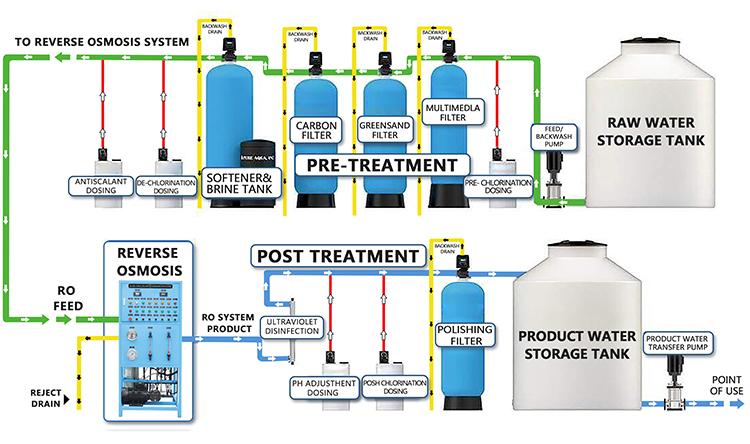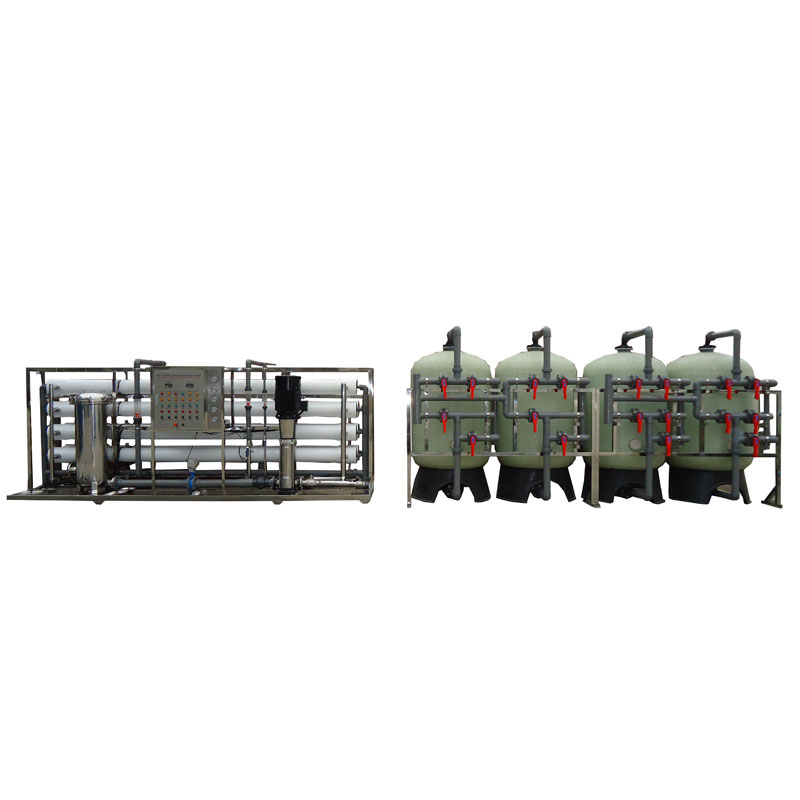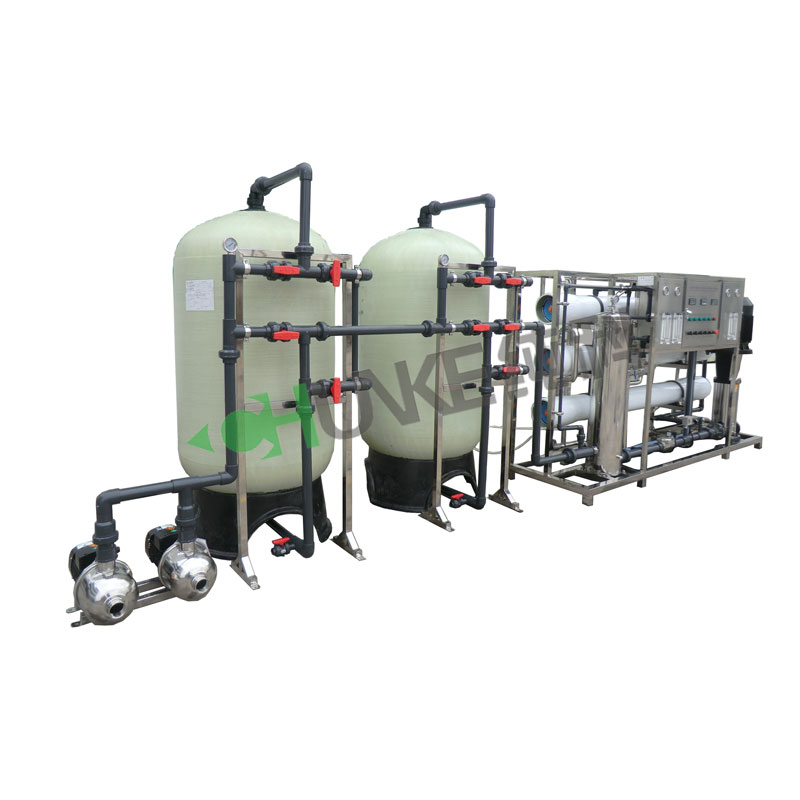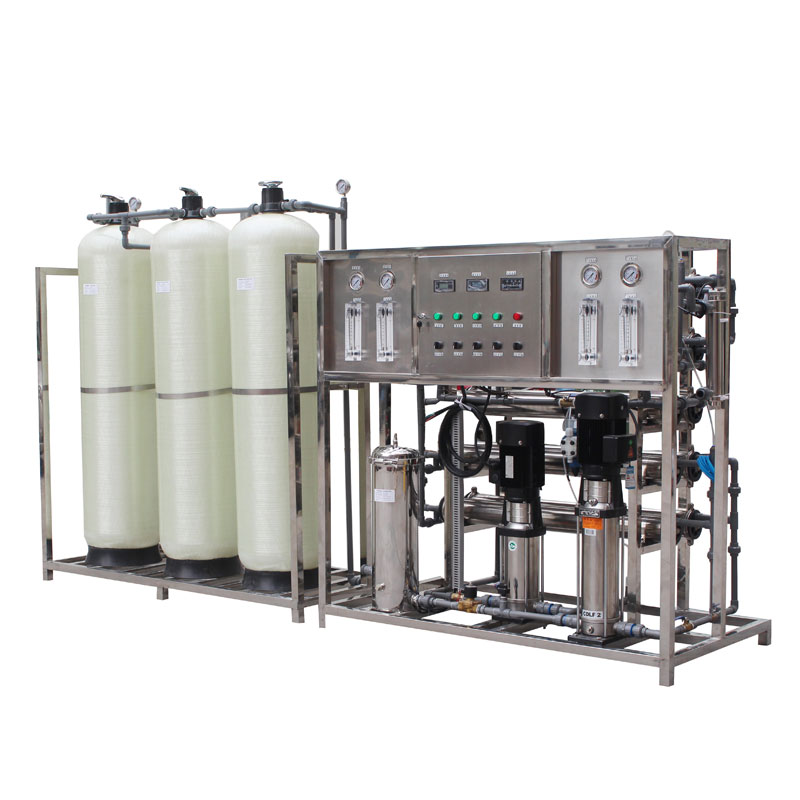Why do we not recommend frequent use of reverse osmosis water treatment machinery?
Although reverse osmosis is considered the most practical water treatment technology, it does have some disadvantages, including higher wastewater production and cost, as well as problems with removing all minerals, whether healthy or harmful. Next, we’ll dive into these disadvantages and the possible effects of frequent use of reverse osmosis water treatment machinery.
1. Wastewater generation and cost issues
The use of reverse osmosis water treatment machinery will produce a large amount of wastewater. This is because a part of the unfiltered water needs to be discharged during the reverse osmosis process to keep the membrane clean. This not only wastes water resources, but also increases the cost and difficulty of treating wastewater. At the same time, the equipment cost of reverse osmosis water treatment machinery is relatively high, and the operation and maintenance costs are also relatively high, which may bring an economic burden to users.
2. The problem of removing all minerals
Another reason why frequent use of reverse osmosis water treatment machinery is not recommended is that it removes all minerals from the water, whether healthy or harmful. Although this can ensure the purity of the purified water, it also deprives the water of some beneficial minerals such as calcium and magnesium. Long-term drinking of purified water treated with reverse osmosis may lead to mineral deficiencies and adverse health effects.

Is frequent use of reverse osmosis water treatment machinery worth it?
After understanding some of the disadvantages of frequent use of reverse osmosis water treatment machinery, let’s think about whether frequent use is worth it.
First of all, although reverse osmosis water treatment machinery has some disadvantages, it is still necessary in some specific situations. For example, for some areas with poor water quality or special-purpose places, such as laboratories, medical institutions, etc., the use of reverse osmosis water treatment machinery may be necessary to ensure the provision of high-quality water sources.
Secondly, although reverse osmosis water treatment machinery has wastewater problems, its impact on the environment can be reduced through reasonable treatment and recycling. Some advanced reverse osmosis equipment is equipped with a wastewater reuse system, which can reuse wastewater, thereby reducing the waste of water resources and environmental pollution.
In addition, although reverse osmosis water treatment machinery may remove some beneficial minerals from the water, there are also mineral supplement products on the market that can help people replenish the minerals they need to stay healthy.

What alternatives are available to address the shortcomings of reverse osmosis water treatment machinery?
1. Activated carbon filter
Activated carbon filter is a common water treatment equipment that can effectively remove odor, residual chlorine, organic matter and other impurities in the water, while retaining minerals in the water. Compared with reverse osmosis, activated carbon filters do not produce wastewater and are relatively low-cost, making them a more economical and environmentally friendly alternative.
2. Ion exchange resin
Ion exchange resin is another common water treatment method that can remove harmful substances such as hardness ions and heavy metals from the water while retaining minerals in the water. Ion exchange resin can be used in a variety of household, commercial and industrial applications, with moderate cost and easy operation.
3. Nanofilter
Nanofiltration is a new type of water treatment technology that can effectively remove microorganisms, bacteria, viruses and other harmful substances in the water, while retaining minerals and nutrients in the water. Nanofilters are relatively low cost and suitable for domestic and commercial applications.

How to use reverse osmosis water treatment machinery rationally to avoid its shortcomings?
1. Control frequency of use
In order to avoid the disadvantages of reverse osmosis water treatment machinery, the frequency of its use can be controlled. When not needed, the frequency of use can be appropriately reduced and other more suitable water treatment methods can be selected, such as activated carbon filters, ion exchange resins, etc., to reduce wastewater generation and economic costs.
2. Supplement minerals
In addition, after long-term use of reverse osmosis water treatment machinery to purify water, you can consider replenishing the minerals in the water through other ways, such as drinking more natural mineral water rich in minerals, or increasing the intake of mineral-rich foods to ensure that the body Required mineral intake.
3. Regular maintenance and cleaning
Finally, it is also very important to maintain and clean reverse osmosis water treatment machinery regularly. Cleaning and replacing the filter element regularly to keep the machine clean and running stably can reduce waste water production and extend the service life of the equipment.

Although reverse osmosis water treatment machinery has a wide range of applications in the field of water treatment, its frequent use may bring some adverse effects, including problems with wastewater production and removal of all minerals. To address these shortcomings, other alternatives such as activated carbon filters, ion exchange resins, etc. can be considered.
At the same time, reasonable control of frequency of use, mineral supplementation, regular maintenance and cleaning are also important measures to avoid the shortcomings of reverse osmosis water treatment machinery. Through scientific and reasonable selection and use, the role of water treatment equipment can be maximized to ensure water quality safety and people's health.






